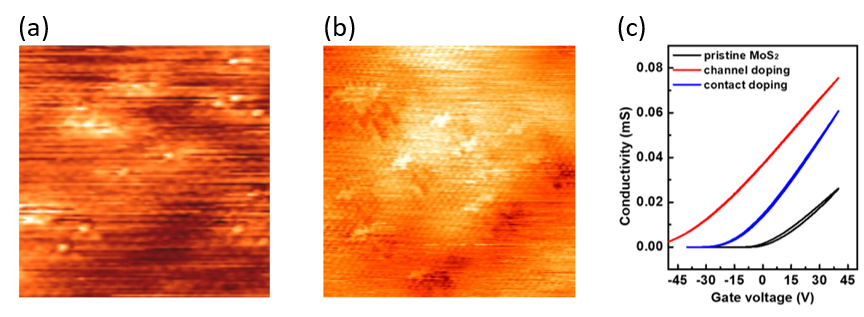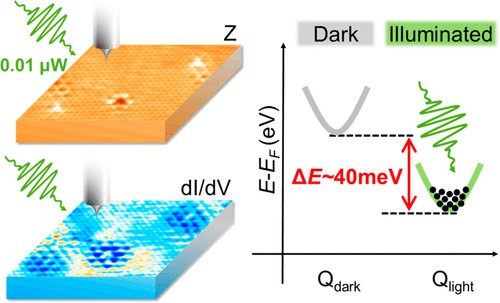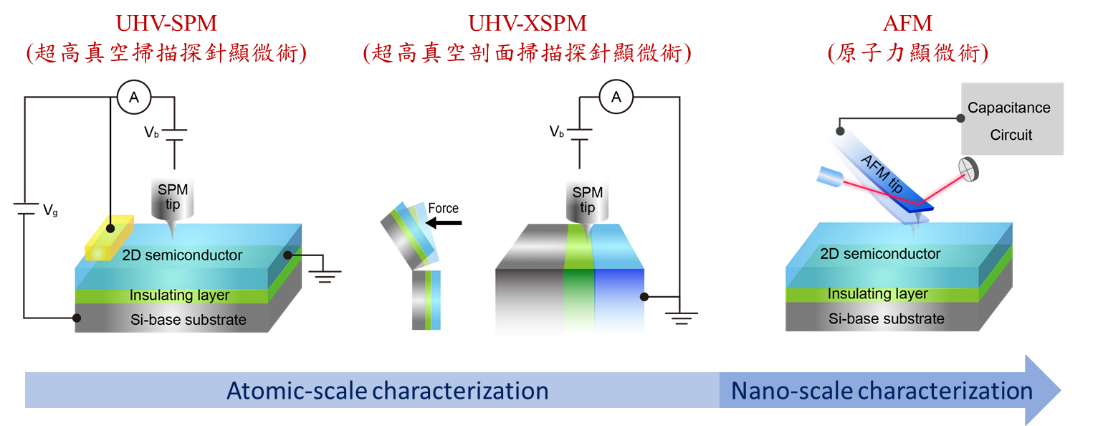Project
Atomically Resolved Scanning Probe Microscopy on Electronic Characterization of Advanced Semiconductors
PI
Co-PI
Research collaborated results of the team: The work develop a two-step doping method for the contact doping of a monolayer MoS2 Au-contact device, and confirmed the doping results through STM images. We achieve a record-high sheet conductance (0.16 mS*sq-1, without gating) and high mobility and carrier concentration (4.1*1013cm-2) of monolayer MoS2, and the contact resistance with gold was reduced to . Research result has been published in the internationally renowned academic journal “ACS Nano”: “Hysteresis-Free Contact Doping for High-Performance Two-Dimensional Electronics”, ACS Nano 2023 17 (3), 2653-2660.

(a) STM image of pristine MoS2 on the SiO2 substrate. Small white spots are the sulfur vacancy sites.
(b) STM image of the two-step-doped MoS2. The white double-cross shapes are the regions with dopants on top of the MoS2.
(c) Gate-dependent characteristic of pristine, channel-doped, and contact-doped MoS2.
Ref.: ACS Nano 17 (3), 2653-2660 (2013).
This work demonstrates a combination of light-modulated scanning tunneling microscopy and the quasiparticle interference (QPI) technique to offer a directly accessible approach to reveal and quantify the unexplored momentum-forbidden electronic quantum states in transition metal dichalcogenide (TMD), and provide the opportunity to explore the electronic behavior of the valley degree of freedom for future potential optoelectronic technological applications. Research result has been published in the internationally renowned academic journal “ACS Nano”: “Directly Visualizing Photoinduced Renormalized Momentum-Forbidden Electronic Quantum States in an Atomically Thin Semiconductor” ACS Nano 2022 16 (6), 9660–9666.

(a) The STS map corresponds to thescanning region on the topographic picture and reveals the QPI patterns in real space.
(b) The schematic diagram of the energy renormalization effect on the Q valley from the photoexcited carriers’ occupation.
Ref.: ACS Nano 16 (6), 9660–9666 (2022).

